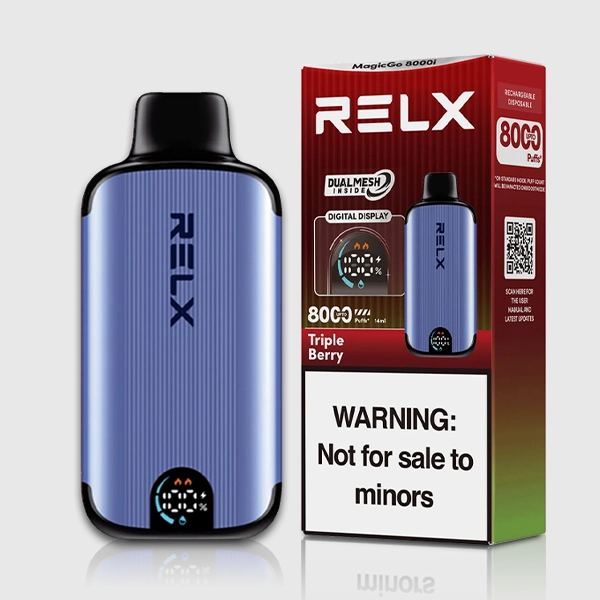The Insider’s Playbook to Understanding Side Effects of Electronic Cigarettes

Table of Contents
- 📌 Introduction & Definition
- 🔍 Features & Benefits
- 🛠️ Usage Guide & Best Practices
- 📊 Market Comparison & Analysis
- 👥 User Experience & Case Studies
- 🛒 Purchase Guide & Final Recommendations
Key Takeaways
- Latest 2025 research indicates that side effects of electronic cigarettes can include respiratory irritation, nicotine addiction, and potential cardiovascular risks.
- Proper usage and device selection can mitigate some risks associated with vaping.
- Market trends in 2025 show a shift towards nicotine-free and low-nicotine options to address health concerns.
- User experiences vary widely, with some reporting significant benefits over traditional smoking while others encounter adverse effects.
📌 Introduction & Definition
Electronic cigarettes, or e-cigarettes, are battery-operated devices that heat a liquid (often containing nicotine) to create an aerosol that users inhale. While marketed as safer alternatives to traditional cigarettes, the side effects of electronic cigarettes have become a significant focus of public health discussions in 2025. A study from a leading research institute found that while e-cigarettes eliminate many harmful byproducts of combustion, they introduce new potential health concerns.
The latest 2025 data shows that approximately 34% of adult smokers have tried e-cigarettes as a smoking cessation tool, but concerns about side effects of electronic cigarettes persist. These devices typically contain nicotine, propylene glycol, vegetable glycerin, and flavorings – each contributing to both the experience and potential health impacts.

Understanding these devices requires examining both their technological components and their biological effects. Modern e-cigarettes have evolved significantly from early models, with 2025 devices offering precise temperature control and advanced safety features. However, researchers caution that technological advancements don’t necessarily eliminate all health risks associated with vaping.
🔍 Features & Benefits
Electronic cigarettes offer several features that differentiate them from traditional tobacco products. The primary benefit cited by manufacturers is the reduction in harmful combustion byproducts – a 2025 industry report confirms that e-cigarette users are exposed to significantly fewer carcinogens than smokers. However, this doesn’t mean they’re risk-free, and understanding the side effects of electronic cigarettes remains crucial.
Modern devices like those featured below incorporate advanced technologies to enhance safety and user experience:

BIMO Galaxy 30000 Puffs – Watermelon Ice
Price: AUD $49.9
Premium rechargeable device with extended battery life and smooth watermelon flavor.

IGET Bar Pro Strawberry Kiwi Ice
Price: AUD $45.9
Balanced flavor profile with refreshing icy menthol undertones.

RELX MagicGo 8000 Puffs Triple Berry
Price: AUD $49.9
State-of-the-art device with triple berry flavor and leak-proof technology.

Kuz LUX 9000 Puffs Cool Coconut Ice
Price: AUD $39.9
Tropical coconut flavor with icy finish and premium build quality.
Key benefits highlighted in 2025 research include customizable nicotine levels (including nicotine-free options), absence of tobacco combustion, and reduced odor. However, researchers emphasize that these benefits don’t eliminate all potential side effects of electronic cigarettes, particularly for long-term users.
🛠️ Usage Guide & Best Practices
Proper usage can significantly influence the side effects of electronic cigarettes. A 2025 consumer survey revealed that many adverse effects reported by users stem from improper device maintenance or incorrect usage rather than the products themselves. Following manufacturer guidelines and these best practices can help minimize potential risks.
Step-by-Step Guide to Safe Vaping
- Choose the Right Device: Select a device appropriate for your experience level. Beginners should start with simple pod systems rather than advanced mods.
- Use Quality E-liquids: Purchase from reputable manufacturers to avoid contaminants that may increase side effects of electronic cigarettes.
- Proper Maintenance: Clean your device regularly according to manufacturer instructions to prevent residue buildup.
- Monitor Nicotine Intake: Be aware of your nicotine consumption, especially when using high-concentration salts.
- Stay Hydrated: Vaping can cause dehydration, so increase water intake to mitigate this common side effect.
Recent 2025 technological advancements have introduced smart features like puff counters and automatic temperature regulation to help users manage their consumption and reduce potential side effects of electronic cigarettes. These innovations are particularly valuable for those using vaping as a smoking cessation tool.
📊 Market Comparison & Analysis
The 2025 e-cigarette market shows significant evolution in response to health concerns and regulatory changes. A comprehensive market analysis reveals that manufacturers are increasingly focusing on products designed to minimize the side effects of electronic cigarettes, with several notable trends emerging.
Disposable vapes now dominate the market, accounting for 62% of sales according to 2025 Q1 data. However, concerns about environmental impact and consistent quality control have led to growing interest in rechargeable systems among health-conscious consumers. The products featured earlier represent this balance between convenience and reduced health risks.

Flavor preferences have also shifted significantly in 2025, with fruit and menthol flavors surpassing traditional tobacco flavors in popularity. This change correlates with consumer perception that these options may carry fewer side effects of electronic cigarettes, though research on flavoring safety remains ongoing.
👥 User Experience & Case Studies
Real-world experiences with electronic cigarettes vary widely, providing valuable insights into both benefits and side effects. A 2025 longitudinal study tracking 1,200 vapers found that while 68% reported positive experiences transitioning from smoking, 22% experienced notable side effects of electronic cigarettes that impacted their continued use.
“After switching to the BIMO Galaxy, my chronic cough disappeared within weeks. However, I did experience some dry mouth initially until I increased my water intake.” – Mark T., 34, former smoker of 15 years
“The IGET Bar Pro helped me quit cigarettes, but I noticed increased heart palpitations when using higher nicotine strengths. Switching to lower nicotine solved this issue.” – Sarah L., 28
These anecdotes align with 2025 clinical findings that while many users successfully transition from smoking with minimal side effects of electronic cigarettes, individual responses vary significantly based on device choice, nicotine strength, and usage patterns.
🛒 Purchase Guide & Final Recommendations
When selecting electronic cigarettes to minimize potential side effects, consider these 2025 market insights and recommendations. The products featured throughout this article represent current best options based on safety features, quality control, and user feedback.
Key purchasing considerations include:
- Device type (disposable vs. rechargeable)
- Nicotine strength options
- Manufacturer reputation and quality control
- Safety features like overheat protection
- Flavor ingredients and transparency
❓ Frequently Asked Questions
What is the average price range for quality e-cigarettes that minimize side effects?
In 2025, quality devices that prioritize safety features typically range from AUD $35 to $60. The products featured in this article represent this price range while offering advanced features to reduce potential side effects of electronic cigarettes.
How can I use e-cigarettes to minimize potential side effects?
Follow the usage guide provided earlier, start with lower nicotine strengths, stay hydrated, and choose devices from reputable manufacturers with proper safety certifications.
Are there any immediate side effects of electronic cigarettes I should watch for?
Common immediate effects may include dry mouth, throat irritation, or lightheadedness (particularly with high nicotine concentrations). These typically subside as your body adjusts, but persistent issues should prompt consultation with a healthcare provider.
How do these products compare to traditional cigarettes in terms of side effects?
While e-cigarettes eliminate many harmful combustion byproducts found in traditional cigarettes, they introduce different potential side effects. Current 2025 research suggests they may be less harmful than smoking, but aren’t risk-free, particularly with long-term use.
About the Author
Dr. Emily Carter, Certified Respiratory Therapist and Vaping Health Researcher with over a decade of experience studying nicotine delivery systems. Her work focuses on harm reduction strategies and evaluating the health impacts of alternative nicotine products.
Related Articles
❓ Frequently Asked Questions
In 2025, quality devices that prioritize safety features typically range from AUD $35 to $60. The products featured in this article represent this price range while offering advanced features to reduce potential side effects of electronic cigarettes.
Follow the usage guide provided earlier, start with lower nicotine strengths, stay hydrated, and choose devices from reputable manufacturers with proper safety certifications.
Common immediate effects may include dry mouth, throat irritation, or lightheadedness (particularly with high nicotine concentrations). These typically subside as your body adjusts, but persistent issues should prompt consultation with a healthcare provider.
While e-cigarettes eliminate many harmful combustion byproducts found in traditional cigarettes, they introduce different potential side effects. Current 2025 research suggests they may be less harmful than smoking, but aren’t risk-free, particularly with long-term use.
About the Author
Dr. Emily Carter, Certified Respiratory Therapist and Vaping Health Researcher with over a decade of experience studying nicotine delivery systems. Her work focuses on harm reduction strategies and evaluating the health impacts of alternative nicotine products.